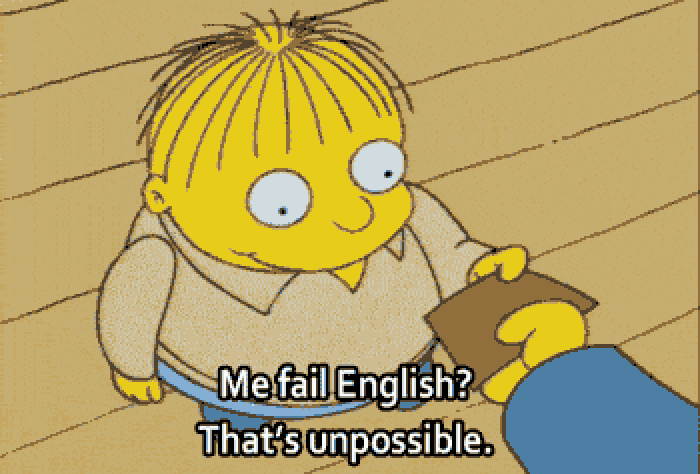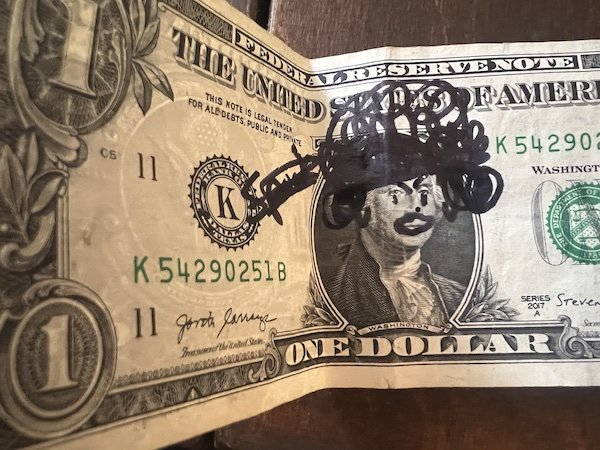You can see how this is getting more and more convincing of it being the same dollar. But despite that, a spectator can still work out that I’m the one who controlled everything that was written on the dollar. And while a duplicate bill with the same markings might not be the solution they come to as immediately, it’s still the one they’re likely to come to.
Another method people use as a way to distinguish a bill other than a signature is to write a prediction down on it. I feel like maybe this is something I’ve seen from David Acer or Richard Sanders or someone else equally Canadian. [Update: It was Richard Sanders. Bill Anywhere from The Richard Sanders Show, Vol 2 (great DVD set, btw).]
So, for example, first I predict the card you’re going to pick on this bill. Later I make the bill disappear, and it reappears with that same written prediction on it, suggesting it’s the same bill.
While this adds another piece to the puzzle, if you could accurately know what card they would pick in advance, then it’s not so difficult to imagine you could write that down on a different bill.
When you predict their card, the question in their mind is, “How could he know what card I’d pick?” If they suspect a duplicate bill, then it’s still the same question in their head, “But how could he know what card I’d pick?” The impossibility of the situation hasn’t really strengthened. It’s still just predicated on you somehow knowing the card.
The Incorrect Prediction Marking Technique
Here, we’re going to force the outcome (in the example above, using the Digital Force Bag App) but we’re going to get the prediction wrong.
We then correct the prediction in a humorous way.
This leaves us with a seemingly uniquely marked object, that you (the magician) could not have anticipated.
What makes this so psychologically disarming is that it just doesn’t occur to people that a magician would use trickery to be wrong. This is so far from their conception of how magicians work and what motivates them. Here we’re actually using the negative stereotype of magicians—that we use trickery to make ourselves look smarter or better than other people—as a way to fool people.
You might say, “Just use a torn corner on the bill if you need a dupe that can’t be signed by the spectator.”
I would say: Use Both. The torn corner will make the Incorrect Prediction Marking Technique stronger. And the IPMT has a benefit the torn-corner doesn’t. (See if you can figure out what that benefit is before the end of this post.)
To be clear, this is not a Dollar Bill/Digital Force Bag/Bill to Impossible Location trick.
This is an Any Object/Any Force/Any Effect where you need a duplicate object technique.
For example, you show someone your book of baseball players autographs. You make a prediction on a baseball of the person whose autograph they’ll choose. They pick Mickey Mantle (via a Svengali pad autograph book). You wrote down Derek Jeter.


















